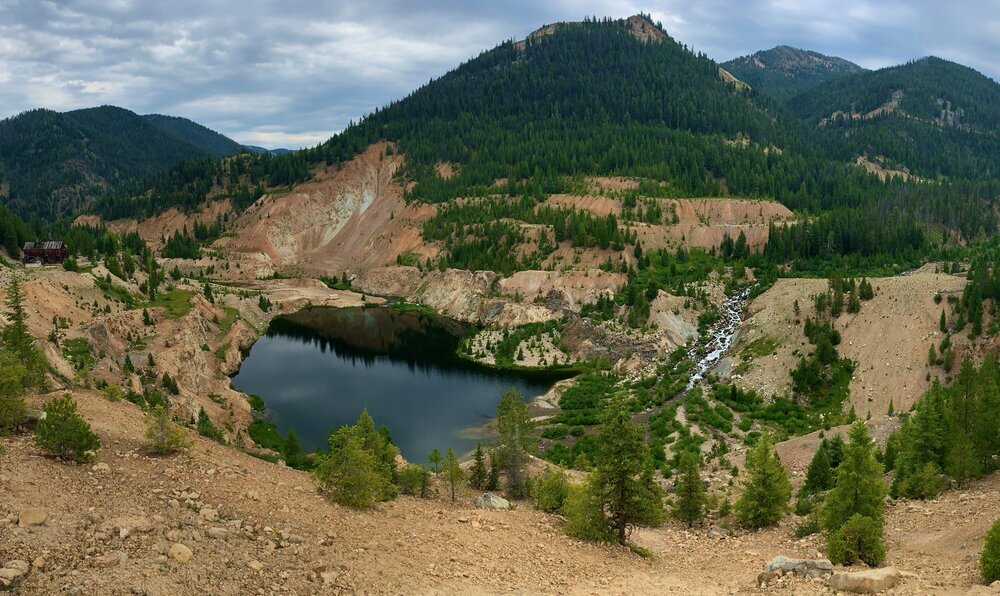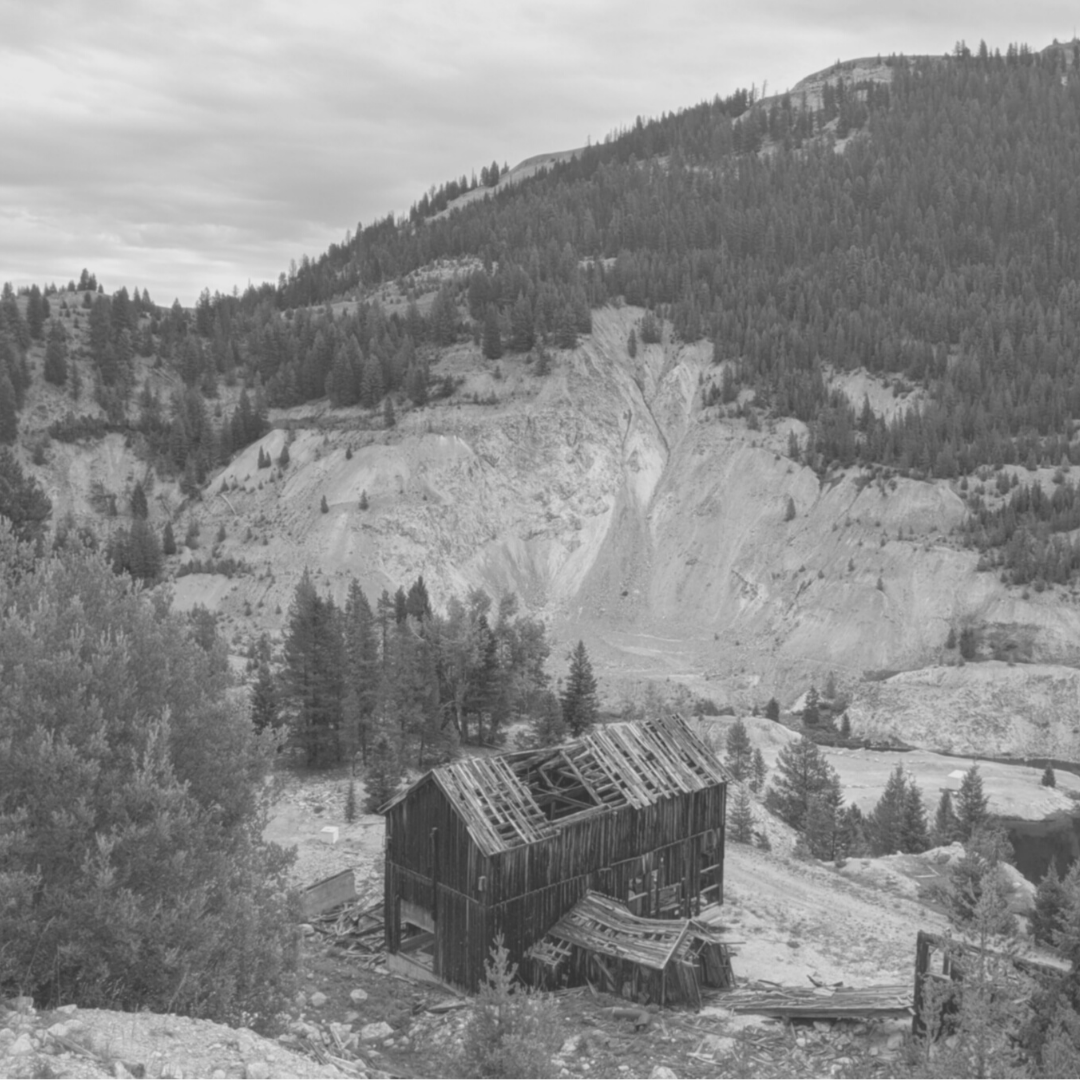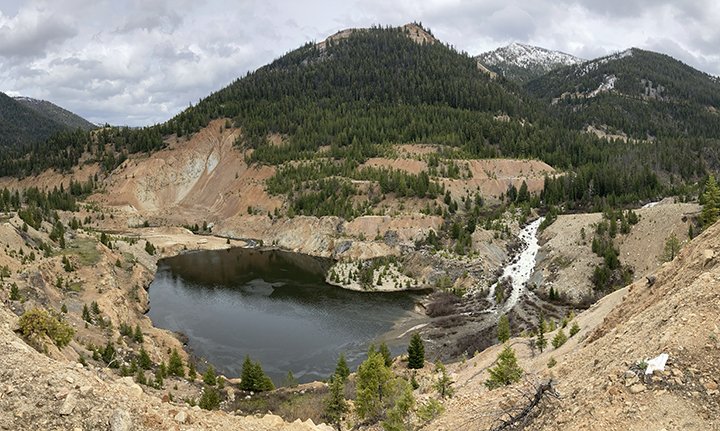
The South Fork of the Salmon River is at risk from a large scale open-pit gold mine.
The South Fork of the Salmon River is at risk from a large-scale open-pit gold mine.
In the heart of the Salmon River mountains, the Stibnite Gold Project is the perfect example of why we urgently need meaningful mining reform now. Perpetua Resources, like other mining corporations, stretches the truth and fails to be honest about the destruction that will be left behind. The impacts of this project on our rivers and fisheries will be felt for generations in exchange for short-term economic benefits.
The Stibnite Gold Project puts the Salmon River at risk, one of our most cherished and economically important river systems. It threatens our recreation industry and some of our most iconic fish species.
In the fall of 2024, the Forest Service released the Final Environmental Impact Statement (FEIS) and Draft Record of Decision (DROD) for the Stibnite Gold Project. The planned open-pit cyanide vat leach gold mine in Idaho’s Salmon River Mountains would jeopardize public health and clean water, harm threatened species, violate Indigenous treaty rights, and permanently scar thousands of acres of public land in the headwaters of the South Fork Salmon River, a coalition of local and national conservation groups said.
Perpetua Resources’ proposed project would destroy over 20% of the critical habitat for chinook and bull trout in the project area. More than 70% of the project’s disturbance would occur on public land.
Despite Perpetua’s assurances that their project is the only viable solution to address legacy pollution from past mining at Stibnite, the Forest Service concluded that “the No Action Alternative is the environmentally preferable alternative” (DROD pg. 35). The Forest Service further explains that even with mitigation measures and efforts to reclaim the area, doing nothing would be less environmentally damaging than proceeding with the project. Ultimately, Perpetua Resources will leave the site in worse condition than how they found it.
For over three decades, Idaho Rivers United has been focused on protecting the thousands of river miles that traverse our state. Idaho’s abundance of public land and natural resources makes it an ideal location for mining interests that permanently alter the landscape.
Idaho’s ground is worth more than what’s in it. It’s time to #SavetheSouthFork and #StopStibnite.
Idaho Rivers United along with partner conservation organizations, including Idaho Conservation League, Save the South Fork Salmon, and American Whitewater, will be hosting a number of informational meetings and webinars over the course of the public comment period to assist with comment writing and to provide analytical assistance for this complex project. See our River RAT page for more information.
-
Located just a few miles east of Yellow Pine, the Stibnite Gold Project (SGP) places one of Idaho’s most biologically diverse watersheds in extreme danger.
Perpetua Resources intends to nearly double the footprint of the historic mine area, using three open-pit mines and cyanide leaching to extract gold, silver, and antimony in the headwaters of one of Idaho’s most iconic waterways – the South Fork of the Salmon River.
Spawning habitat for bull trout, Chinook salmon, and steelhead, abundant recreational opportunities, as well as deep cultural ties and treaty-reserved resources for the Nez Perce and Indigenous communities of the region are all at risk if this project is approved.
The SGP has been a highly complex and controversial proposal from the start. The Forest Service has decided to produce the SDEIS in response to project design changes that fell outside the typical NEPA process. This highlights concerns that the experience and expertise that Perpetua brings to this scale of project is unacceptable.
Among our key concerns are the increased risk of heavy metal contamination, stream temperature increases, and general loss of critical ecosystem function and habitat. Against the backdrop of ongoing salmon recovery efforts, recreational values and access, and the broad negative impact on the environment, this project represents an unacceptable risk to our public lands.
Perpetua’s plans include broad mitigation measures to “restore the site,” however, the notion that additional mining is required in order to do so is simply bad policy and science. Even with the proposed measures, there will be permanent damage to critical fisheries, specifically bull trout, and water quality.
Learn more about the details of the Stibnite Gold Project here.
-
The East Fork of the South Fork of the Salmon River is a productive habitat for endangered and threatened Chinook, steelhead, and Bull Trout. While fish have not been able to migrate past the Yellow Pine Pit on the East Fork, they are present in the river system up to the “glory hole.” In addition, Meadow Creek and other tributaries above the Yellow Pine Pit boast high-quality rearing and spawning habitat for endangered resident Bull Trout, rainbow trout, and other species.
Learn more about the risks associated with the project and what’s at stake here. -
The Stibnite Mine District, located near Yellowpine, Idaho, has a long history of mining dating back to 1891. Mining operations continued through the decades, with various owners, until activity ceased in 1997. However, over a century of mining left the site with significant environmental damage, including open pit mines, contaminated waste, and disrupted fish habitats. Restoration efforts began in the 1990s, focusing on water quality and wildlife, including critical habitat for endangered Chinook salmon and Bull Trout.
Today, the site remains a source of concern. While not officially a Superfund site, legacy pollution, and water quality issues persist. Although restoration efforts at the site began decades ago, Perpetua Resources has inaccurately portrayed itself as the sole entity capable and willing to restore the Stibnite Mine Area. Perpetua Resources pitches the Stibnite Mine Project as a ‘restoration-through-mining’ opportunity. Many of their actions, however, portray a different reality.
Learn more about the history of the Stibnite Mining District and the project history here. -
Open-pit gold mining, particularly near waterways, poses significant environmental risks, including water contamination, acid drainage, and tailings dam failures. Research shows that most operating gold mines pollute our water. The proposed open-pit cyanide leaching mining operations threaten the Salmon River watershed due to its scale and location, with a high potential to affect wildlife and communities downstream.
-
As we look to the future, we envision a world where our free-flowing rivers are no longer treated as expendable resources. We see land managers with the ability to say no to devastating projects like the Stibnite Gold Project and a mining industry that pays its fair share while being held accountable for the pollution they inevitably leave behind.
Learn more about the urgent need for mining reform in the U.S.
Stibnite Gold Project News










